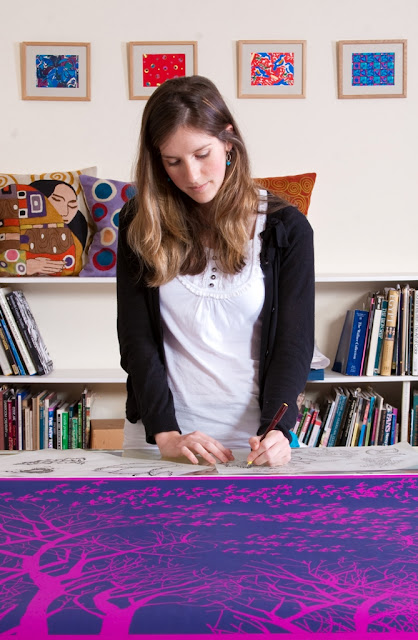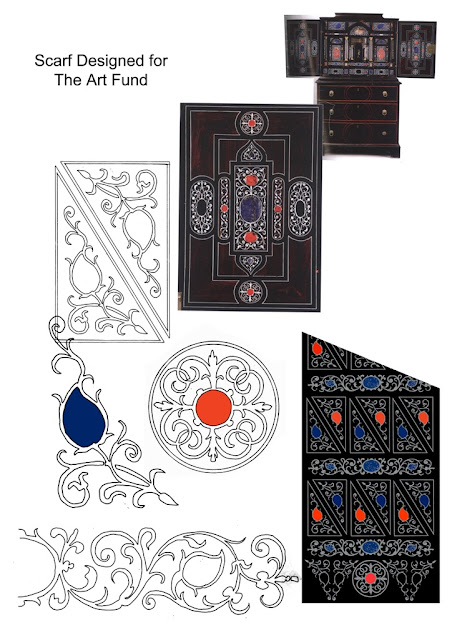As James developed his printing skills he started to get small orders for bespoke silk scarves from local shops, hotels and golf clubs. His first big commercial order however came in 1978 and was to a large extent thanks to his wife’s personality and home cooking.
Mother was managing the Wheatsheaf restaurant in Tewkesbury at the time and through her hard work, excellent food and extrovert personality had built up a good regular clientele. James had by now converted the skittle alley at the rear of her restaurant into a print room and mother was in the habit of occasionally inviting some of her regulars back to see him at work. One of these honoured diners, a lady called Ruth Segar, happened to work at the local headquarters of The National Trust and having recently commissioned a scarf design for The Trust, suggested that James might print it for them.
The National Trust was at the forefront of what we now call ‘Heritage Retailing’. They, along with institutions such as The Royal Academy of Arts and The National Gallery in London, were starting to develop the whole idea of museum shops and the development of ranges of gift products inspired by their collections.
Ruth arranged for the scarf designer Pat Albeck to come down from London to discuss the project and so James and Marthe suggested that the meeting should be held over lunch in their own kitchen at home. Mother put on a wonderful spread, several glasses of wine were consumed and the meeting apparently went very well indeed!
Over the years many museum and gallery buyers, designers and artists were invited down from London to discuss business, always over a home cooked lunch around the kitchen table at Beckford. It seems that word of their hospitality spread around the museum community and invitations were always eagerly accepted!
That first ‘landscape’ scarf design was the start of a long association with both Pat Albeck and The National Trust and set us on the path of printing and later designing for many prestigious museums and institutions. It is of particular significance to us therefore that it is this design that features on page 78 of Albrechtsen & Solanke’s SCARVES (published by Thames & Hudson) and described as “the definitive work on scarves in the 20th century…”
 |
| Pat Albeck's Landscape design for The National Trust |






